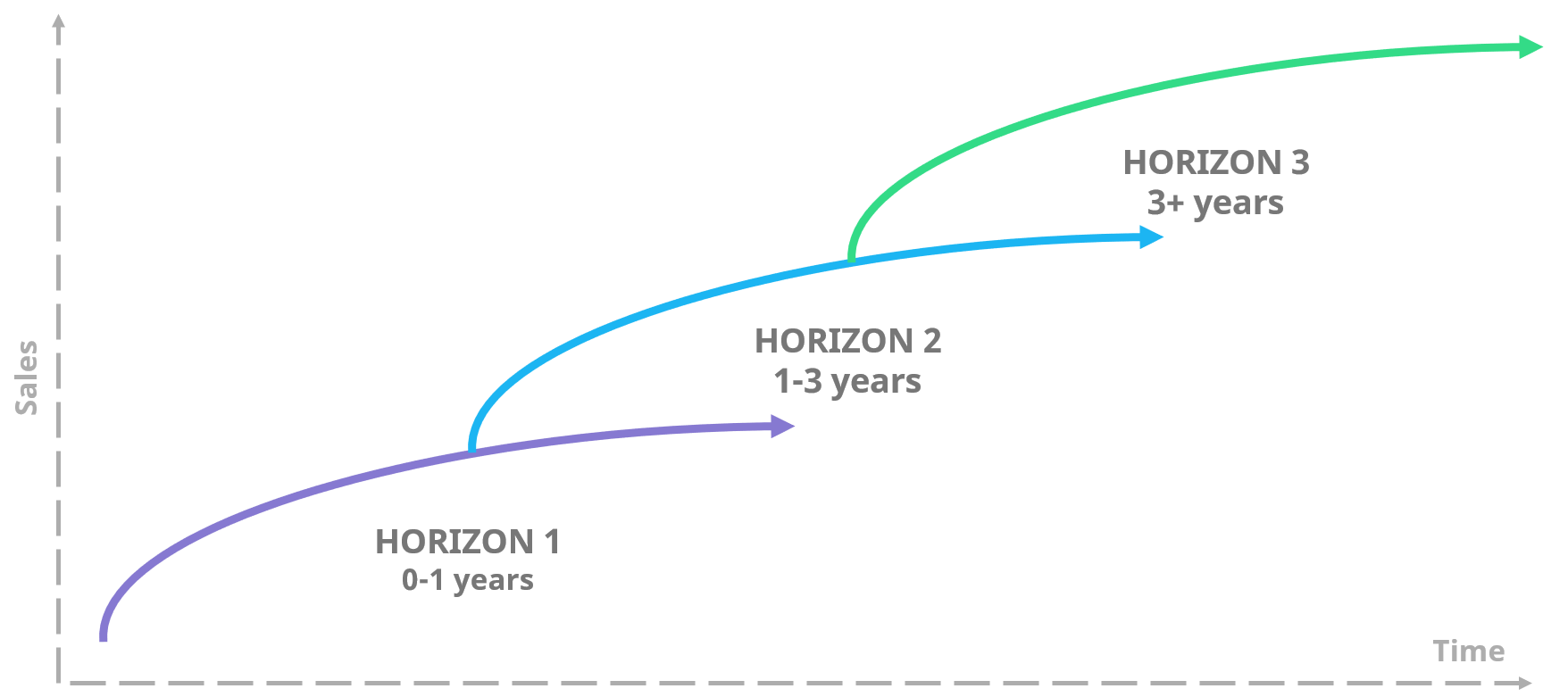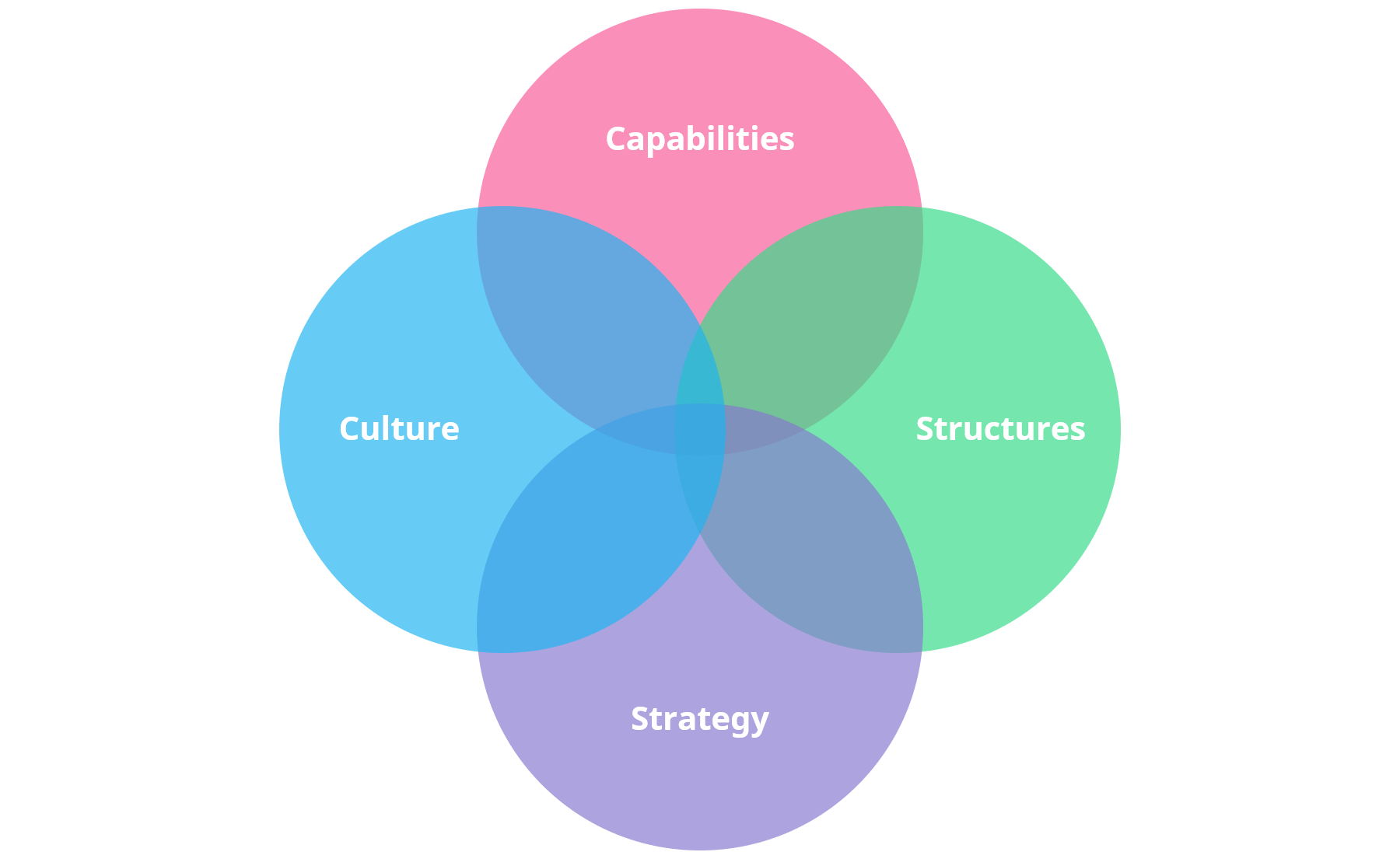7 Simple Steps for Making Innovation Less Difficult
Whenever people ask how to succeed with innovation, we always tell them there isn’t just one universally accepted way to do it.
Each organization has its unique challenges that may become barriers to innovation, and the more we’ve talked with different organizations and studied the topic, the wider range of challenges there seems to be.

Succeeding with innovation isn’t easy as only 6% of executives tell they’re satisfied with their innovation performance. Thus, it’s quite likely that you’re going to face certain obstacles during the process as well.
However, instead of getting too caught up with the challenges of innovation, there are some things you can do to pave the way for innovation.
We believe that by following these simple steps, you can make innovation a little less difficult within your organization, no matter your current level.
For a brief recap of the topic, you can also watch our Q&A series where we go through some of the steps you can take to make innovation a little bit easier.
Table of contents
- 1. Set clear goals that are aligned with your strategy
- 2. Make simple changes that all aim towards a big ultimate goal
- 3. Constantly enhance your organization's innovation capabilities
- 4. Keep the customer at the core
- 5. Build an innovative culture by promoting active collaboration
- 6. Find balance between short- and long-term performance
- 7. Take a holistic approach to innovation
- Webinar: Building a Successful Innovation Program
1. Set clear goals that are aligned with your strategy
According to a study, those who reported that their companies were outperforming their industry groups were far more likely to report strategic alignment.
Although this point seems quite obvious, not all companies have clearly defined goals for innovation that are aligned with the overall strategic objectives of the organization.
Not only do goals give you something to work for, they direct your work and help you to set clear expectations for your innovation performance.
Lack of goals often mean lack of focus, which can lead to disorientation of your employees. However, although focus is of the utmost importance, choosing what to do can sometimes be a challenge as there is often more than one way to achieve desired outcome.
To be able to set strategically aligned goals for innovation, you should first find answers to the following questions:
-
- How does innovation contribute to the company strategy?
- What do we want to achieve with innovation?
- Where are we now and where do we want to be in the future?
- What needs to be done to get there?
Once you’ve answered these questions, you should reinforce clarity at all levels of the organization to make sure people actually understand how innovation contributes to the big picture and what their individual roles are in that puzzle.
Setting individual performance goals that support the grand goal becomes easier once everyone knows where the organization is headed.
2. Make simple changes that all aim towards a big ultimate goal
Once you’ve defined how innovation contributes to that big ultimate goal, it’s time to choose the initiatives that will take you to the right direction and introduce them by making small, gradual changes.
Innovation is a long-term learning process and instead of introducing a number of different innovation initiatives right from the start, you should try to make simple changes to improve the way you currently work.
It is often smart to begin with easy to grasp innovation activities and targets without making things too complex in the beginning. Depending on your goals, it is often smart to begin with making incremental improvements to your existing products or processes.

Just like with anything new, you don’t have to achieve everything at once but rather focus on making innovation a continuous and scalable process that keeps improving different areas of your business.
Although it’s good to have ambitious goals, aiming too high too quickly may backfire as people tend to get excited about new initiatives fast, but they also quickly forget about them if innovation isn’t made an integral part of usual company operations.
Thus, instead of launching tons of different innovation initiatives at once, you should start with the most important goals, focus on gaining a few positive experiences from the get-go and keep developing the system based on what you learn.
3. Constantly enhance your organization’s innovation capabilities
By innovation capabilities, we primarily refer to the people who are working at the organization as well as their individual skills, knowledge and capabilities, such as:
-
- Leadership skills
- Technology understanding
- Business and market knowledge
- Problem solving processes
- Empathy
- Decision making skills
- Persistence, etc.
Although there are also other capabilities and resources you need to be able to innovate, people are one of your most important assets as they’re the ones who come up with new ideas and have the ability to make change happen.
By building the right type of team that supports the vision and shares the values of the company, you ensure that people work together in alignment with the company’s purpose and goals.
Leaders and employees who understand innovation and work as role models who are open to change are often adopting new behaviors and ways of doing things that are likely to drive positive change in an organization.
However, great performance takes more than just great people as you also need to focus on constantly learning and developing the skills of your team.
Just as this quote attributed to Thomas Edison says:
“There is a way to do it better — find it.”
We at Viima, for example, have a set of powerful tools and systematic methods in place for continuous learning and improvement.
We’ve recently launched an internal growth model that helps each team and individual set clear performance goals and standards for their work. These performance goals are closely linked to the projects we’re currently working on to ensure we’re constantly learning and improving as we’re completing our daily tasks.
Once again, this doesn’t have to be anything complicated. The point is just to ensure you and your team are constantly on the right track, becoming better than you were yesterday.
4. Keep the customer at the core
Successful innovators know how to be and stay relevant – they put their customer first.
Based on a survey, all of the top innovators value deep customer insights in their innovation programs and have ranked customer insights as their most important capability especially during the ideation stage.
Amazon, a classic example of a customer centric company, has outlined customer obsession as the number one principle in driving their initiatives. Whatever they do, they start with the customer and work vigorously to earn and keep their trust.

Innovations are ultimately about creating value and although high performance is difficult to achieve and even more difficult to sustain, what matters is how companies use their capabilities and other resources to create products and services that connect with their customers.
High-growth companies harness the power of a carefully managed ecosystem of partners. To be able to identify and solve real problems for your customers, both internal and external collaboration are needed.
Asking customer-specific questions about how they’ve been able to improve their operations and what they think you could do better is a great way to learn about how valuable your customers actually see your product.
As opposed to just relying on your own perceptions, you want to have a constant dialogue with your customers as well as the people who are working with them to be able to identify problems and possible opportunities for improvement.
5. Build an innovative culture by promoting active collaboration
Company culture is an all-encompassing concept made up of a number of different elements such as individual and collective values, formal processes, informal ways of working as well as company’s purpose and mission.
Because there is so much to consider, corporate culture is often one of the most challenging aspects to change.
We’ve previously written quite comprehensively about how to build a culture of innovation and how to transform corporate culture with innovation practices. We’ve also held a webinar about the topic in which you’ll learn more about how to drive innovation in your organization.

Innovation is at its best when ideas are exchanged and developed across teams and multiple business functions. Cross-functionality allows people with different functional expertise to work together to deliver on a new challenge. This can lead to improved problem solving, which again improves efficiency.
Although there are different approaches to building an innovative company culture, open communication, clear expectations and facilitating active collaboration are the keys to success.
Employees should be encouraged to share their ideas with others, and it should be made easy for them to get their voices and ideas heard. Here a dedicated idea management tool can help as it increases transparency and improves motivation.
When people are motivated and inspired to find, submit and develop new ideas, they become more productive and can achieve higher levels of output.
More motivated and engaged workforce leads to more innovation but it’s also important to facilitate discussion by reminding people about why innovation is important for the organization and why they should participate.
6. Find a balance between short- and long-term performance
It often seems that companies are built for short-term performance – leadership, decision-making and processes are often adapted to show good numbers on the next quarterly report and measured on the daily operational performance.
Although short-term performance is important, and you certainly need some quick wins to succeed, the purpose of innovation is to secure that the company is viable also in the future.
This isn’t necessarily achieved by continuously producing a bit better, faster and with less cost, which is what quite many companies are doing. Although radical/disruptive innovation generally isn't an activity you should start with, especially if you're just launching the program, it shouldn't be overlooked.
The key is to keep discovering and seizing opportunities for new growth now and for the future by finding a balance between short- and long-term innovation initiatives.
To balance your innovation activities, you should simultaneously work on:
1. Extending and defending core businesses2. Building next generation products
3. Creating emerging businesses
in all of the three horizons of growth:

7. Take a holistic approach to innovation
We’ve seen hundreds of different innovation programs in our discussions with our customers and other companies throughout the years.
All of the successful ones seem to have one thing in common: they have a really holistic approach to innovation and don’t have any obvious holes in their game.
In practice, this means that an organization’s long-term success depends on its ability to integrate the following key aspects of innovation:

Often, it’s not enough to do well in just one or two areas but you should aim for making all of these aspects work. If you fail in one area, it most definitely has a negative impact on other areas as well.
For example, if your organizational structures aren’t flexible and adaptable enough, or, people aren’t given sufficient resources to make innovation happen, it’s quite difficult to create a pro-innovation culture.
Innovation is both a process and an output that takes multiple forms. As previously mentioned, innovation doesn’t occur suddenly or by chance, but results from constant iteration and requires a systematic approach.
We’ve recently held a webinar in which we’ll discuss more about how to build a successful innovation program. If you found this post useful and would like to learn more in detail about how to succeed in practice, you can get the free recording of the webinar behind the link.
This post is a part of our Innovation Management blog-series. In this series, we dive deep into the different areas of innovation management and cover the aspects we think are the most important to understand about innovation.
You can read the rest of the articles in our series covering innovation management by clicking on the button below. Don’t forget to subscribe to our blog to receive updates for more of our upcoming content!









